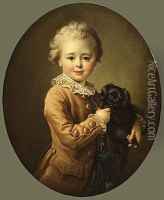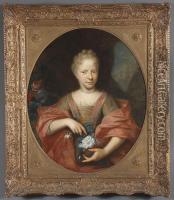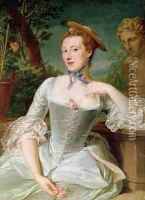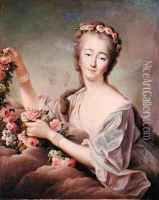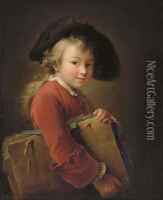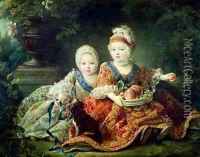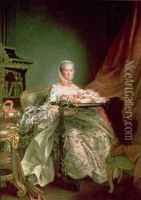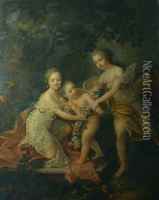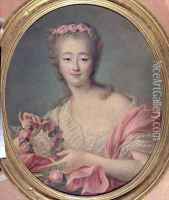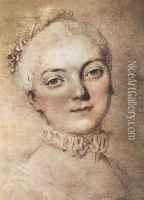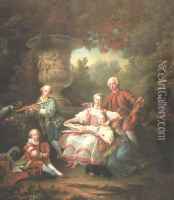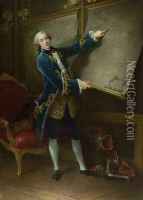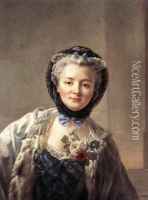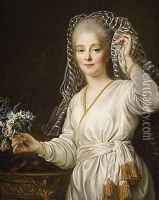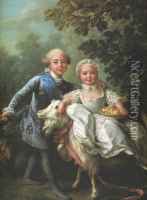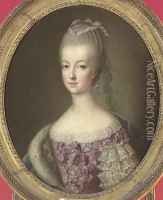Francois-Hubert Drouais Paintings
François-Hubert Drouais was a prominent French portrait painter during the 18th century, renowned for his work in the Rococo style. Born on December 14, 1727, in Paris, France, he came from a family with artistic pedigree, as his father, Hubert Drouais, was also a painter. Exhibiting a talent for the arts from an early age, François-Hubert was trained by his father before continuing his studies under other notable artists such as Charles-Joseph Natoire and François Boucher, who were leading figures of French Rococo painting.
Drouais quickly gained a reputation for his skill in creating portraits, particularly those capturing the aristocracy and royalty. In 1748, he won the prestigious Prix de Rome, which allowed him to study at the French Academy in Rome. His time in Italy further refined his painting technique and understanding of classical art, which he would later blend with the more playful and decorative Rococo style.
Upon returning to Paris, Drouais established himself as one of the city's leading portraitists. His ability to capture the likeness and personality of his sitters, as well as his refined use of color and fabric, made him a favorite among the French elite. In 1758, he was admitted to the Royal Academy of Painting and Sculpture, which bolstered his status as an artist. He became the official portraitist for the French royal family, creating memorable depictions of King Louis XV, Queen Marie Leczinska, and other members of the court.
Drouais's portraits are characterized by their elegance and the often idyllic settings in which he places his subjects. His works were not only a reflection of the sitters' social status but also a means of projecting an image of refined taste and sophistication. His use of light and texture brought his portraits to life, and his paintings were celebrated for their vivid realism and attention to detail.
Unfortunately, François-Hubert Drouais's life was cut short when he died on October 21, 1775, at the age of 47. Despite his relatively short career, he left behind a significant body of work that continued to influence portrait painting in France. His son, Jean-Germain Drouais, also became a painter, although he is more known for his history paintings. Today, François-Hubert Drouais's portraits are considered important examples of 18th-century French art and can be found in museums across the world, including the Louvre in Paris and the Metropolitan Museum of Art in New York.
